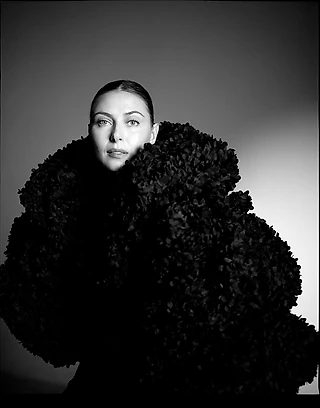Ракетка
Выставляю сейчас эту информацию, но у нас не будет время обсудит ее до ОИ. Обсудим потом.
Однако думаю что это интервью с директором фирмы Wilson содержит интересные факты для всех болельщиков. Конечно попытаюсь найти и переводчик.
Gear Talk: John Lyons, Part I
A few months ago, I had the chance to sit down with John Lyons, Wilson’s Global Product Director for racquets, strings, and balls. We spoke about research and development currently being done at Wilson, as well as how the Chicago-based company works to customize the racquets of its professional players.
Justin diFeliciantonio: What does it mean when players say they want a racquet with “more feel”?
John Lyons: Feel is a big thing we’ve talked about the last couple years. But there’s a big dilemma with feel. Every player says they want it. When we ask players, through either aided or unaided research, “What do you want from a tennis racquet?”—feel always comes up at the top of the list. Yet, no one can really define it. It’s not easily measurable. Power we can measure. Vibration dampening we can measure. Feel, on the other hand, is different for every player. So it’s hard to say that a racquet has more feel or less feel, if a player can’tarticulate what that is.
JD: But we do know about many of the components that constitute feel.
JL: Yes, of course. The shape of the handle. The racquet’s weight and balance. But most importantly, the frequency of vibration. When a ball impacts the strings, the racquet vibrates a certain way. And that vibration is what players perceive to be feel. Some players will play with a racquet and say it has good feel. Others will play with the same racquet and say it doesn’t have a good feel. So what we’re trying to do is identify what frequencies of vibration [certain types of] players perceive as “good feel.” We also ask the players to describe those racquets that have frequencies of vibration they don’t feel good about. And generally players will say the racquet’s very harsh or “pingy.”
Ultimately, what we’re trying to do with both the basalt fibers and now Amplifeel—which is a different way of using basalt [in the racquet’s handle]—is to filter out vibrations that players perceive to be harsh or uncomfortable, but leave other crucial vibrations there. Because if you dampen out all the vibrations, then players don’t feel the ball at all. So it’s fine tuning which frequencies of vibration stay in the racquet and which ones we block. That’s been our biggest push. Many of the other brands are doing the same thing.
JD: When it comes to dampening vibrations, can you make a distinction between a racquet's comfort and its feel?
JL: There is a difference. What we’re doing is not a vibration-dampening story; it’s trying to improve feel. Many people misinterpret: “Oh, you’re dampening vibration.” Yes, certain frequencies of vibration. But it’s not a comfort story. In the past, there have been technologies that have attempted to block out all vibrations for comfort. Which might be something more specific to someone with a lot of elbow problems. But [when it comes to basalt and Amplifeel], this is a different story.
JD: Do you approach filtering the vibrations of more advanced players’ racquets, versus those for club-level players, in a certain way?
JL: Well, it’s not really a matter of there being one set of numbers. Like, “Okay, we want to always filter out a certain x megahertz vibration.” It varies from racquet from racquet. In part, it has a lot to do with getting players to use the right type of racquet. It’s not that easy for most players to figure this out. So one of the things we’re doing to simplify that process is starting with broader categories. We segment our racquets into three categories: Control & Spin, Power & Spin, and Power & Comfort. People sort of look at it and say, “Wait a minute, you’ve got the same characteristics, two categories that say “power” and two that say “spin.” But the game has changed so much. For better players, generating spin is all important now; at the top levels, it’s about using the spin to control the ball so that they can hit it harder. On the other hand, there’s another group of players who have a very short swing, and for them power is a completely different thing. For a club 3.0 player with a short, flat swing, it’s not about spin, but about raw power—how fast the ball will go off the face of the racquet.
JD: On tour, pros use so many different types of racquet configurations. What makes a certain racquet feel good to a particular player?
JL: I think a lot of it is their perceptual set, what they grew up with, what they’re used to. Generally, whatever you’re used to feels pretty good. So you start off with some kind of racquet when you’re 14 years old, and you’ve got players playing with the same type of racquet their entire career. Because they’ve hit so many thousands of balls with a certain feedback from the racquet that, in their mind, that’s good feel.
You know, part of what attracts players to different brands is handle shape. It’s the first and most immediate feedback you get from the racquet: How that shape feels in your hand. And it’s a little different for each brand. Prince, for example, is probably a little bit rounder, the handle’s eight sides are a little bit more even. Head is at the other end, a little more square. And Wilson’s is somewhere in the middle.
JD: Say a pro grew up using a certain racquet, which is what still feels good to them. Could what feels good to them actually not be the right racquet for them?
JL: I think at the pro level, as players are trying out different racquets, you’re talking about very small shifts—in stiffness, in vibration, in sweet spot size, in weight and balance. (Rafael Nadal, for instance, added a little weight for more pop on the ball.) So we have players who do come in for playtests. And generally they’re looking for a very small transition. We have a lot of players playing with a certain kind of racquet. And now we’ve developing new versions to launch next year. And these racquets give them a little bit more power, a little bit more spin. Which may not seem like a lot to a recreational player. But to them, it’s a big change, because they’re more sensitive to the racquets. Usually they want more power or more spin.
JD: How involved are professional players in that process?
JL: It really varies. Some of the players are, I don’t want to say equipment geeks, but they’re very involved in it. Others couldn’t even tell you what grip size they use. I can’t name names. [Laughing] We did a playtest with a player yesterday—a good player, top player. He was feeling like he needed a little bit more spin. So in a retail shop when you pick up a new racquet and demo it, we want you to have an immediate “wow.” But for a pro player, it’s almost the opposite. You want it to almost feel the same, except for that one little thing. It’s like you’re making a two-percent or three-percent change. Which is the feel or the racquet stiffness or the string pattern or whatever. Whereas if any of us go into a shop and try a racquet, and it doesn’t feel like it’s noticeably much better, then you don’t buy it.
JD: As you said, these changes the pros make are so small. Are they actually large enough to have some kind of noticeable purchase on how a player’s shots behave on-court?
JL: Definitely some of it’s going on in the players’ heads, for sure. But yeah, players tinker a little bit. Recently, for a playtest, we had three racquets made identical to one another with the exception of their constructions. And we have some players who are interested in the racquet already. We haven’t even finalized it. Note, though, we aren’t designing it just for top players. You design it so that the average consumer can play it, too. Although most of the pro players do use a heavier racquet than what we sell to retailers. They can handle a heavier racquet. It’s just physics. If there’s more mass, they’re going to get more ball speed, more power. And the racquet’s going to feel more stable when it’s hit off-center. But they’re different physical specimens, especially on the men’s side.
JD: Force equals mass times acceleration?
JL: Right. There’s only two ways you can make the ball go faster. You can have more mass, or you can swing faster for the same mass.
JD: What happens during these playtest sessions?
JL: They warm up. They hit 10 or 15 balls with one racquet. They talk about how it felt differently. Try another one. Hit 10 or 15 balls. Some players, they call it, good or bad. It’s like taking an eye test. “That one was better.” Why? “I don’t know, it was better.” Other players can talk about it a little bit more.
JD: If you were going to boil it down, what are the main differences between the sticks the pros use and what the rest of us tote around?
JL: I think it’s a little bit of a misconception some players have that the pro must be playing with something that’s not even like mine at all. But for most of these players it’s two things. It’s a heavier racquet, which any consumer can do with lead tape. And then there are guys like Roman Prokes, one of a few people around the world making a living molding custom handles for players and customizing weight and balance.
Another thing is that there is a tolerance in manufacturing. For example, Wilson's tolerance on weight is plus or minus seven grams, on a stock production racquet. Not many of us can feel seven grams. But a pro player can feel that weight difference. So part of that customization is just making sure that the racquets are dead on, exactly the same. So it’s more about having eight racquets in the bag, and the next one you pull out feels exactly the same as the last one.
http://blogs.tennis.com/the_pro_shop/2012/07/gear-talk-john-lyons-part-i.html








